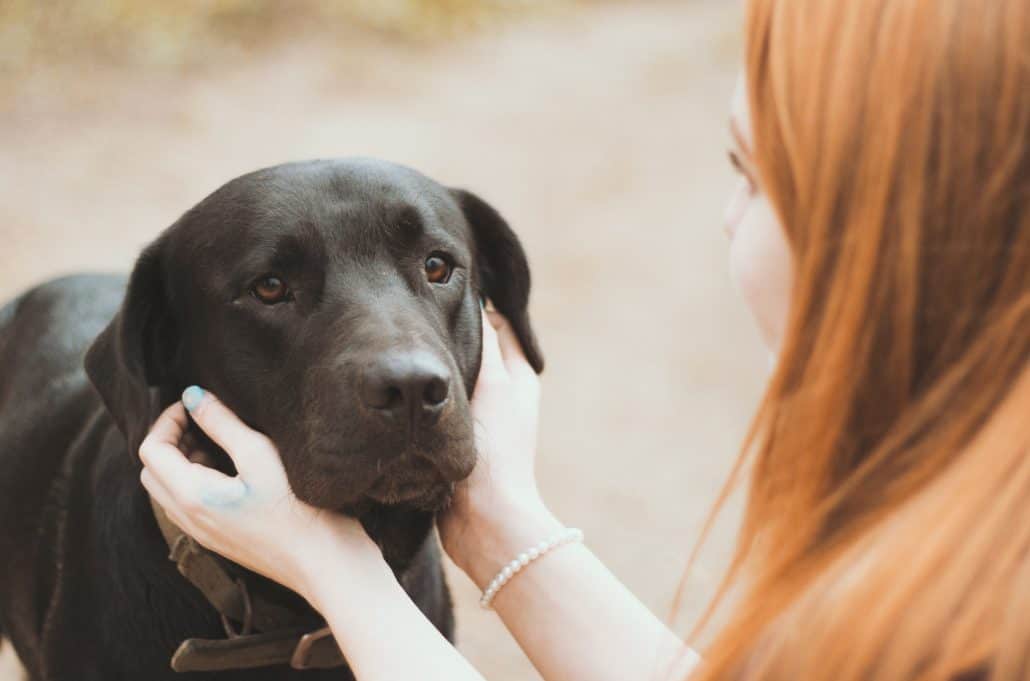Many dog owners often rely on their pet’s nose to tell them how healthy he or she is. For example, a cool, wet nose is typically believed to be a sign of an overall healthy animal. But while that’s true to some degree, it may not always be the case. Let’s look at the facts regarding a dog’s nose to make sure it’s feeling as fine as you believe.
Moist vs Dry Noses
In general, a moist nose means it’s properly suffused with blood and the dog’s body is adequately hydrated. If the body happens to be dehydrated, which can happen due to vomiting, diarrhea, or a problem with consuming water, then the pet’s nose may appear to be dry due to an insufficient flow of blood. If your dog has stopped drinking water for some reason be sure to have him/her checked out since it could be a sign of more serious medical issues like problems with the liver or kidneys. In addition, a warm nose could be the result of elevated body temperature or hyperthermia and a cool nose could be due to hypothermia or decreased body temperature.
If your dog is healthy then its nose should be the same size on both the left and right side and it should also feel moist to mildly dry. In addition, consistent in-and-out airflow should be noticed from both nostrils. The nose shouldn’t show signs of pigmentary and textural changes to either the surface or deeper tissues and there should only a clear discharge and in small amounts.
Nasal Discharge
If you believe your pet’s nose is running more than usual it means there’s a nasal discharge. This could be in the form of blood, thick mucus or clear liquid. If the discharge is clear and there’s just a small amount of it then you’ll be glad to know it’s normal for a dog. However if the discharge increases in volume it could be due to an irritated nasal passage from inhaling things such as perfume, smoke, pollen or air fresheners etc.
When a dog discharges thick opaque mucus it’s often because of an infected nasal passage. If the discharge is bloody it may be the result of trauma to the outside area of the nose. This could be blunt trauma, a scrape or a penetrating injury and the bleeding can often be stopped by gentle pressure. In addition, blood vessels inside the nose can sometimes bleed if something enters the dog’s nasal passage or if the tissues are affected by a tumor.

Pigmentation
When it comes to a change in the pigmentation of your dog’s nose it could mean there’s a health problem. However, that’s not always the case since it could be affected by the breed of the dog as well as its environmental exposure or age. But if you’ve noticed a change in the pigmentation of the pet’s nose it’s highly recommended to visit a veterinarian. Also, if the texture of the nose changes due to things such as unhealed sores or scaling it could be a disorder known as Nasal hyperkeratosis. This is more common in specific breeds such as Labrador retriever and cocker spaniel and the nose becomes dry or callus because of excess keratin.
Just remember that a healthy dog could have a warm, dry nose and a sick dog may have a cool, wet nose. If your pet shows any sign of illness you should plan a visit to the vet regardless of the state of his/her nose. You should also visit your vet if you notice a sudden change in your dog’s nose such as appearance, heat, sores, bleeding, unusual discharge, wheezing, sneezing, or dryness and cracking.


